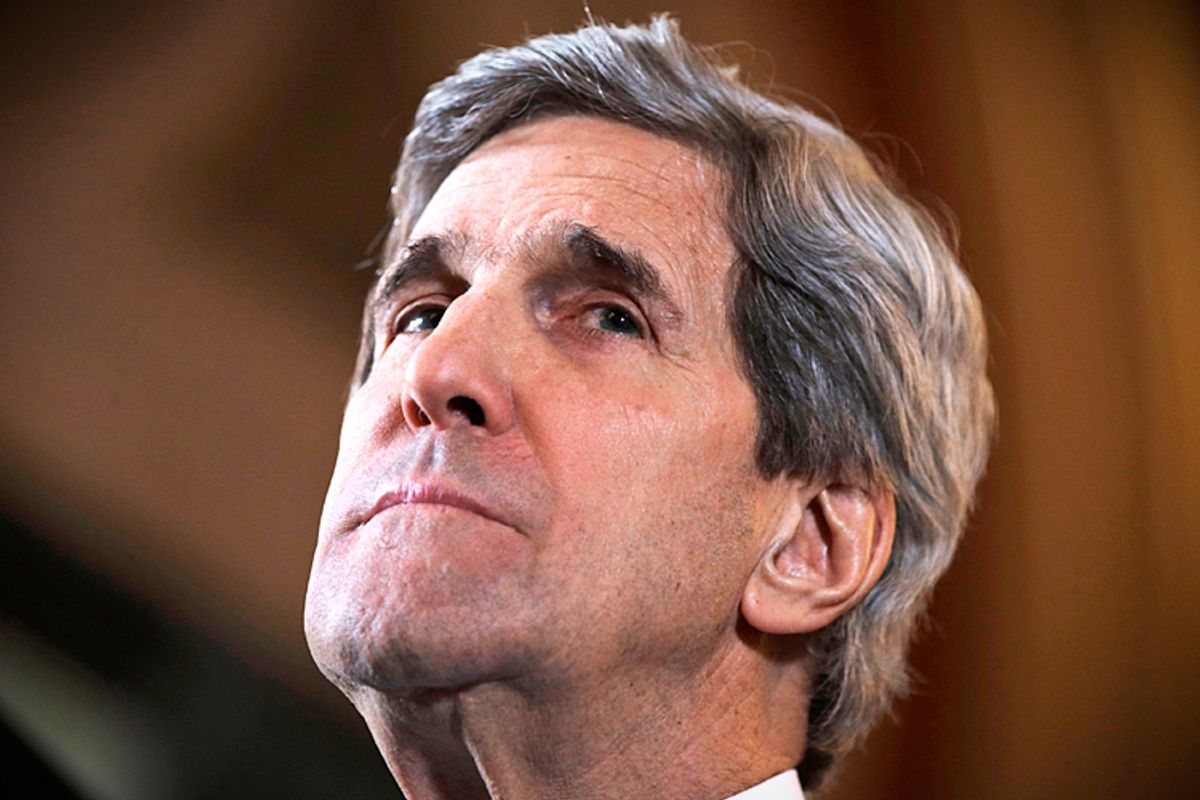It's no secret that when former Secretary of State Hillary Clinton famously declared in 1995 that “women’s rights are human rights,” she cemented her status as a champion for women and girls around the world. And as secretary of state, Clinton made gender equality and women’s empowerment a pillar of American diplomacy. The question now is whether the departure of the leading advocate for women will signal the end of the State Department's focus on these key issues.
Among her achievements in this area, Clinton launched the Equal Futures Partnership to increase women’s leadership in politics, and made the case that rights for women and girls are key ingredients for democracy, peace and economic growth in every country. Critically, she led the United States National Action Plan on Women, Peace and Security as well as the United States Strategy to Prevent and Respond to Gender-Based Violence Globally, an initiative of USAID and the State Department. If that wasn’t enough, she also shaped the Secretarial Policy Directive on Gender, which has been instrumental in working to end child marriage.
The media is abuzz with comparisons between Clinton’s signature achievements and her successor John Kerry’s prospects in furthering the work that Clinton began. Kerry released a promising statement of commitment to women's rights and empowerment, in honor of International Women's Day today. But in order for him to ensure that advancing the status of women and girls remains a centerpiece of U.S. foreign policy, here are three things he needs to do:
1. Strengthen the global standard to end violence against women and girls. One out of every three women worldwide is physically abused, and violence against women is more than a violation of human rights — it’s also a major barrier to achieving global development goals. By some estimates, women and girls make up 70 percent of the global poor, an alarming statistic compounded by their vulnerability to violence. What’s more, poverty drives early marriage, and adolescent girls in early marriages are often more susceptible to sexual abuse. The 2011 U.S. National Action Plan on Women, Peace, and Security along with the United States Strategy to Prevent and Respond to Gender-Based Violence Globally marked important first steps in elevating the status of women, but the U.S. government must now advance these programs and policies that protect women and girls from sexual and gender-based violence. This is an essential building block for achieving human dignity and eradicating global poverty.
2. Ensure that rural women have control over their own land, food and water sources. According to U.N. statistics, women in the developing world comprise 43 percent of the agricultural labor force but own only 15 percent of the land. Discrimination denies small-scale female farmers the same access men have to fertilizers, seeds, credit and farmland. Consider Kenya, where 67 percent of people live on less than $2 a day. Kenyan women own only about 5 percent of theland but produce most of the country’s food. Time and again, women have proved to be better equipped than men to enable agricultural economies to thrive. And the World Bank reports that women and girls reinvest an average of 90 percent of their income in their families, compared to a 30 to 40 percent reinvestment rate for men. Our State Department must use its political muscle and moral voice to ensure that rural women in Kenya, India, Nicaragua and elsewhere in the developing world have the freedom to access and own land, grow their own food and feed their own families.
3. Increase funding for girls and women to access sexual and reproductive health services. Currently, only two cents out of every international aid dollar is directed to girls. Girls are almost entirely neglected from existing strategies to stem the spread of HIV, even though women and girls make up an increasing proportion of the population living with the virus. And, unfortunately, rates of female infection cont
Less than half of all countries dedicate resources to women and girls in their response to HIV and AIDS, and young women aged 15-24 in sub-Saharan Africa are up to eight times more likely than men to be HIV-positive. The estimated 600 million adolescent girls living in developing countries are vulnerable in part because they are consistently lacking access to medical care and reproductive health services, which exacerbates a cycle of poverty, violence and HIV. If these root problems are not addressed along with the virus itself, the AIDS epidemic will continue to undermine these girls’ futures. The PEPFAR Blueprint: Creating an AIDS-free generation offers one critical path for Secretary Kerry to advance the sexual and reproductive health of women and girls.
Former Secretary Clinton made sure that women and girls were a centerpiece of American diplomacy. But we must not be fooled into thinking that the work is over. Achieving global justice depends on the ingenuity of human rights activists around the world and on the strength of U.S. foreign policy to advocate for women and girls — now and for generations to come.



Shares